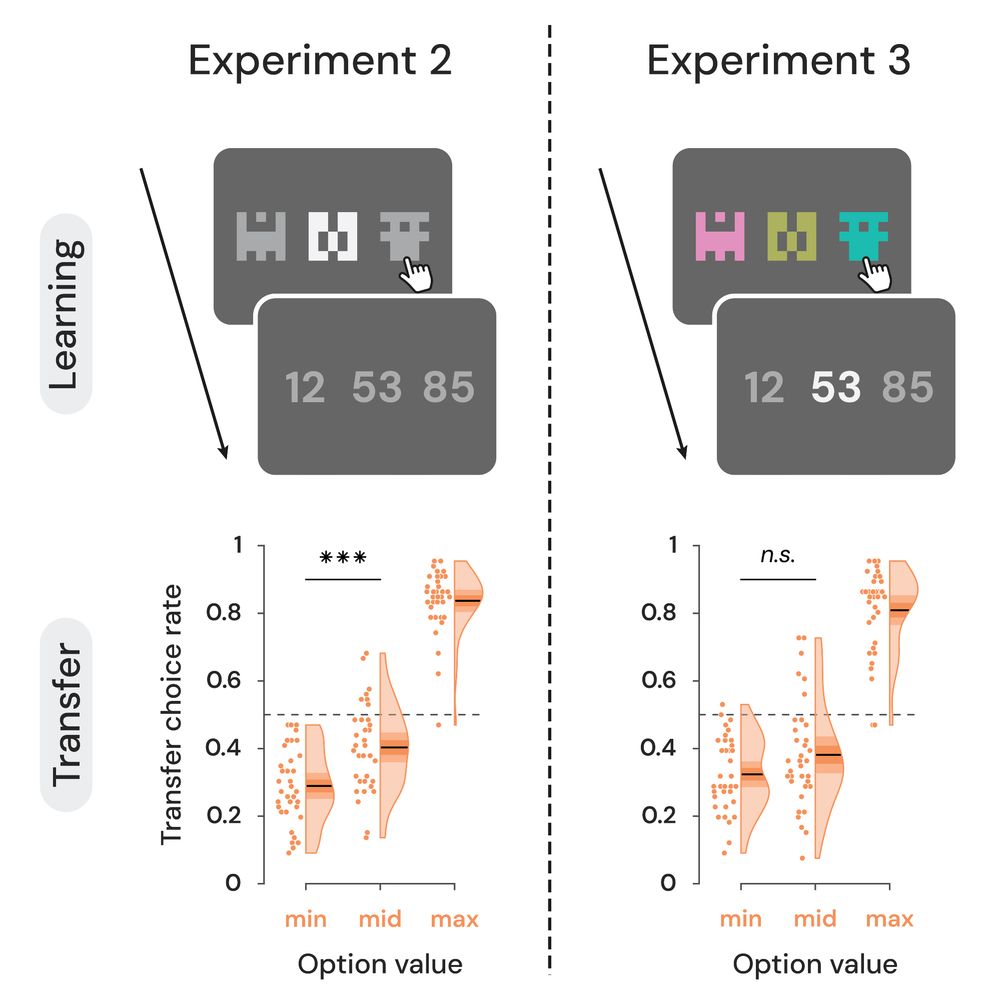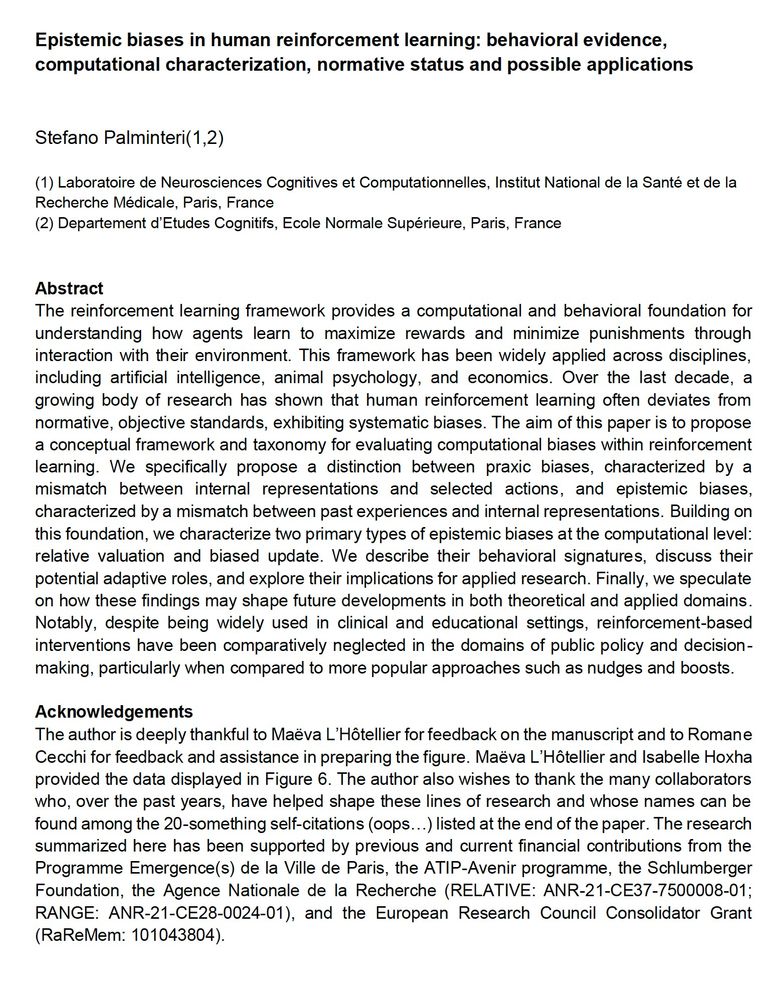Romane Cecchi
@romanececchi.bsky.social
80 followers
68 following
11 posts
Postdoc in the Human Reinforcement Learning team led by @stepalminteri.bsky.social at École Normale Supérieure (ENS) in Paris ✨
Posts
Media
Videos
Starter Packs
Romane Cecchi
@romanececchi.bsky.social
· Apr 30
Romane Cecchi
@romanececchi.bsky.social
· Apr 22
Romane Cecchi
@romanececchi.bsky.social
· Apr 22
Romane Cecchi
@romanececchi.bsky.social
· Apr 22
Reposted by Romane Cecchi
Reposted by Romane Cecchi
Reposted by Romane Cecchi





